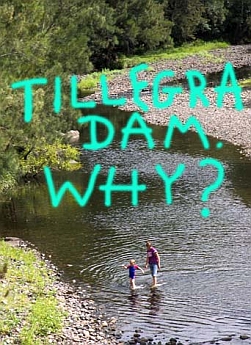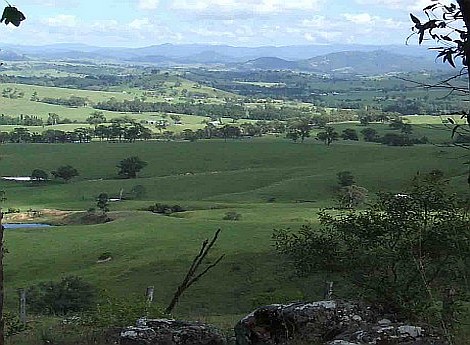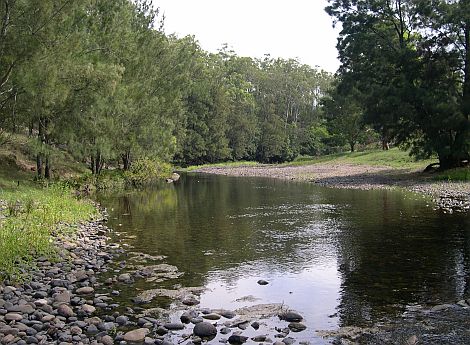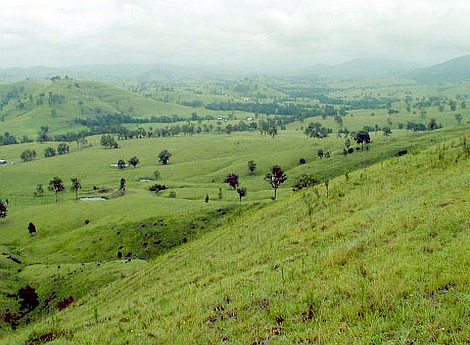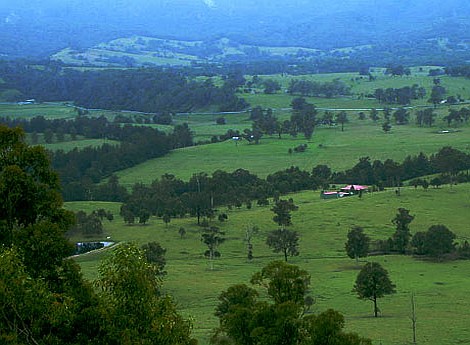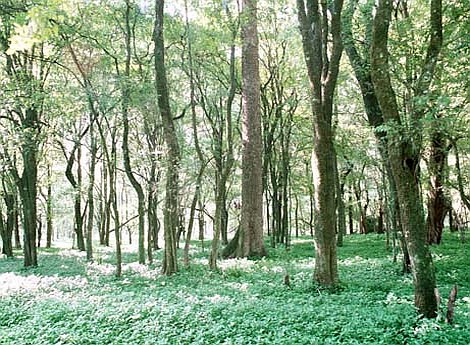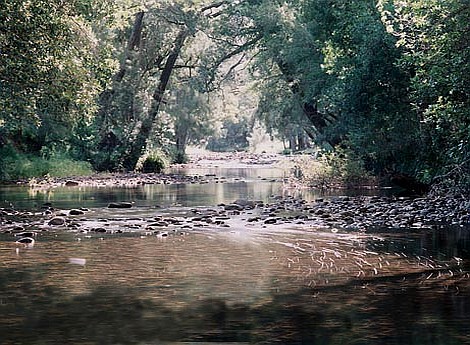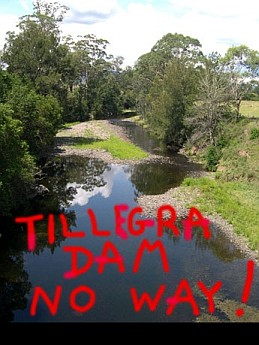10 Myths about Tillegra
According to Dr Simon Fane, Research Director from the Institute for Sustainable Futures (ISF) at the University of Technology, Sydney there are ten myths about the proposed Tillegra Dam that are easily debunked. The ISF are recognised experts in water supply/demand planning and demand management, having advised many government and regional authorities on cost and water saving measures. the following is an edited version of a presentation that Dr Fane gave at the Wise Ways to Water Forum held at Wangat Lodge in April this year.
Myth 1: Water savings from efficiency measures are insignificant
Using Sydney Water Corporation (SWC) as an example (as the data is available and the planning has already been done!) – water savings from efficiency measures are significant – an additional 45% over current supply from dams can be realistically achieved through:
- ·Water savings of 145 billion litres per year (leakage reduction, basix for new homes, residential & non-residential indoor & outdoor reductions – efficient appliances etc)
- · Recycling of 70 billion litres per year
- · Additional supply of 77 billion litres per year (deep water, groundwater & desalination readiness)
Myth 2: Big dams provide cheap water
Using SE Qld as an example, the cost of water from the proposed Traveston Crossing scheme (Mary River Dam) is close to $2.90 per kL (for 150 GL), whilst including all water efficiency plans and measures the cost of water saved or supplied is under $1.80 per kL (for over 170GL)!
Myth 3: Hunter Water does well on water efficiency
Hunter Water has not done large scale demand management (DM) beyond some leakage prevention. For the Hunter Water have achieved:
- · Limited household retrofit program (compared to SWC)
- · Limited rebates for tanks(compared to SWC)
- · No commercial and industrial efficiency program (unlike SWC)
Myth 4: Tillegra required for new development
In 2003 Hunter Water’s Integrated Water Resource Plan stated: “building a new dam at Tillegra would be far less cost effective than many demand management and water conservation initiatives.”and that “a new water source would not be required within the next 30 years”. The IWRP provided a number of cheaper smaller supply options. Only full time desalination was more costly than Tillegra!
Higher population growth predictions have now been put forward, however:
- · These are predictions only, and far exceed Dept of Planning and Hunter Valley Research Foundation figures
- · New development must meet BASIX 40% reduction target
- · There could be a 70% – 80% reduction with rain tanks for hot water & recycled water for toilets & outdoors
- · It still makes sense to do the cheaper options before Tillegra or any other expensive option
Myth 5: Tillegra needed for Central Coast
Gosford-Wyong Joint Water Authority have money now from the Commonwealth for the Wyong River – Mangrove Creek Dam ‘Missing Link’ and
Gosford-Wyong have not agreed that there is a need for Tillegra for their supply. There has been no joint regional (Hunter & Central Coast) demand-supply planning (IRP analysis) showing the best options for the combined region.
Myth 6: Tillegra required for drought security
Alternative forms of drought security – ‘Readiness options’ – are available in the Lower Hunter:
- · Large scale demand management programs – residential, commercial & industrial
- · North Stockton sand beds
- · Potable reuse – into Grahamstown Dam; or
- · Desalination – into Grahamstown Dam
Plan and get ready to build but do not build.
Use large scale DM to buy time.
Big cost savings in not building until absolute must.
May never need to build!
In a major dry time better than 30% reduction in water needed with restrictions.
Myth 7: Tillegra needed due to Climate Change
Estimates of climate change impacts are currently uncertain, and in fact there is a possibility of better rainfall in Lower Hunter in the future.
Myth 8: Tillegra good in terms of greenhouse gas
Proposed tree plantings maybe of little or no benefit-in fact young growing trees as they transpire more, reduce available runoff reducing reservoir in flows. Old growth forests are greater at soaking up carbon.
Significant climate impact will occur due to inundation of land – soil carbon converts to methane – 20 times the impact of CO2
Any pumping to the Central Coast has energy implications.
Any increase in potable supply increases pumping energy.
Huge lost potential for major greenhouse savings from DM – saving hot water gives large energy & greenhouse savings!
Myth 9: The State Government will pay for Tillegra Dam
Outcry in Sydney over cost of Desal plant – $92/yr for households using 200 kl pa, total cost of $1.9B for a population of 4.3Million.
Tillegra at least $300M (probably 2 or 3 times this amount in reality) with 0.6M population in Lower Hunter.
In Sydney the base rate is increasing more than the per kilolitre rate – households cannot avoid increased costs by using less – i.e. they are paying more for less!
Myth 10: There is nothing that can be done
Tillegra was a political announcement with no strong justification or analysis of alternatives.
Subsequent justification document (Why Tillegra Now) flimsy and with no adequate analysis of alternatives.
Tillegra Dam is highly unlikely to be cheapest option for a secure water supply in the region:
- · Not for long term supply or
- · Drought contingency or
- · In combination
- · In other regions analysis show significantly cheaper long term & drought readiness options than large dams
This dam is very large for the region-twice the volume of Hunter Water’s existing Grahamstown & Chichester Dams combined!
Tillegra will have significant environmental and social impacts.
The customers of Hunter Water yet to find out how proposed dam will impact their household budgets.
